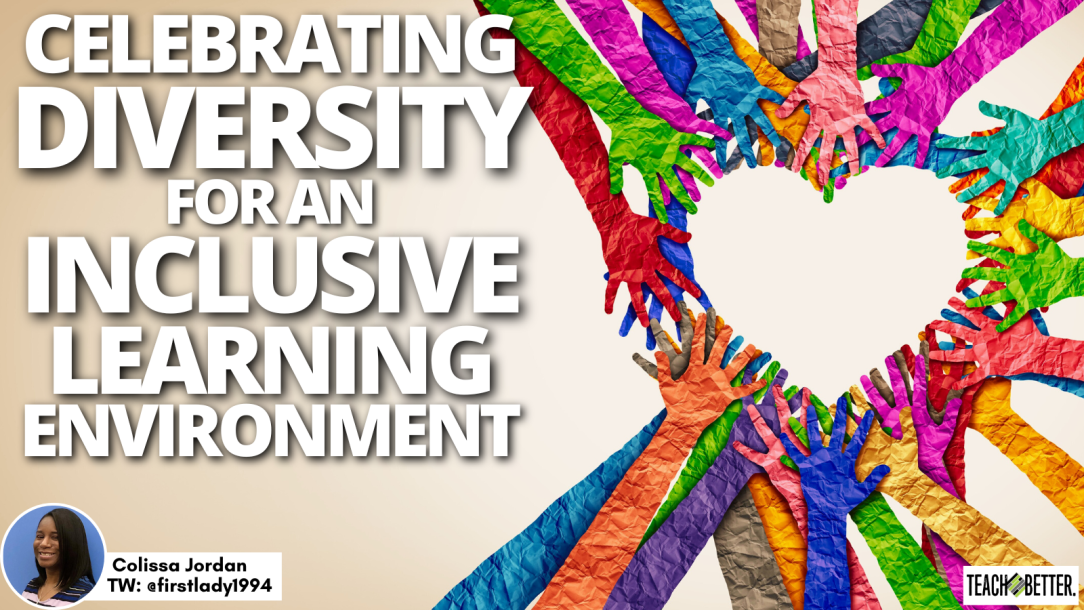TL;DR:
- The post emphasizes the importance of advocating for culturally responsive teaching practices in education, highlighting its role in creating inclusive learning environments.
- Specific strategies for advocating with building administrators, parents, and the community, are shared.
- This post emphasizes the need to explain the importance of these practices, involve parents in curriculum planning, and engage the community to support diversity and inclusion.
- Culturally responsive teaching promotes equitable opportunities for students from diverse backgrounds and strengthens social-emotional competencies.
I am passionate about advocating for culturally responsive teaching practices that celebrate diversity and create inclusive learning environments. Culturally responsive teaching is a pedagogy that recognizes the importance of students’ backgrounds and experiences as valuable resources for learning. As educators, we have a responsibility to address the cultural and social factors that impact our students’ education.
Here are some examples of how to advocate for this with building administrators, parents, and people in the community.
As educators, we must advocate for and implement culturally responsive teaching practices to ensure equity in education. Share on XAdvocating for Culturally Responsive Teaching with Building Administrators
When advocating for culturally responsive teaching with building administrators, the first step is to explain the importance of such practices. Culturally responsive teaching strategies help to build trust and enhance engagement among students and their teachers.
Additionally, such teaching practices help build students’ cultural identity and promote self-awareness. It reinforces the importance of recognizing and respecting students’ individual needs to enhance their overall academic achievement, as well as their social and emotional well-being.
Furthermore, building administrators should support practices that welcome diverse perspectives, cultures, and backgrounds through the development of staff training programs, initiatives, and policies.
Advocating for Culturally Responsive Teaching with Parents
Parents are crucial partners in students’ learning journeys. One way to advocate for culturally responsive teaching with parents is to elevate their voices and perspectives. Host parent-teacher conferences or informal discussion groups and incorporate their input into your curriculum plans.
Furthermore, parents can serve as cultural ambassadors within the school and the larger community. Provide opportunities for parents to showcase their cultural traditions or practices in the classroom or at school events. This can enhance student’s socio-cultural understanding and promote a sense of respect and appreciation for diversity.
Moreover, outreach efforts, such as parent meetings or newsletters, can be curated in multiple languages. It not only helps build trust, but it also promotes inclusivity and accessibility to a wide array of families as, in some cases, language barriers can create communication obstacles.
[scroll down to keep reading]Advocating for Culturally Responsive Teaching with People in the Community
Community can play a significant role in advocating for culturally responsive teaching. When educators engage community members, it fosters better relationships and partnerships that support students’ academic success. Inviting community leaders into the school for guest speaker engagements or collaborative workshops supports shared goals and ideas for promoting diversity and equality.
Culturally responsive teaching focuses on creating an inclusive environment, one that addresses, values, and respects diverse cultures and traditions. This can be a collective effort between the school and the community. Community members can collaborate to offer resources, such as providing a food bank or helping with after-school programming. Additionally, community organizations can support by funding a diverse book drive or creative projects that promote culturally responsive learning.
Benefits of Culturally Responsive Teaching
Culturally responsive teaching strategies focus on creating an inclusive learning environment that provides students from diverse backgrounds with equitable opportunities to succeed academically, socially, and emotionally. By promoting an inclusive learning environment, it addresses the cultural and social variables that impact students’ educational achievements.
The development of social-emotional competencies in students is also strengthened by incorporating culturally responsive teaching practices into the curriculum. For instance, activities that celebrate diversity, such as the use of literature and visual arts that represent diverse cultures, contribute to reinforcing the notion of inclusiveness in the student’s developing identity. Further, building on the strengths and assets of diverse cultural practices in curriculum planning, a culturally responsive educator can craft an effective instructional strategy that promotes equitable academic success.
In conclusion, as educators, we must advocate for and implement these teaching practices to ensure equity in education. Building administrators, parents, and community members all have a role in promoting these practices, which celebrate diversity and create a welcoming learning environment. With continued efforts in promoting equity in education, elevating the voices of diverse backgrounds, and promoting inclusivity, schools can move towards meeting cultural competence standards.
About Colissa R. Jordan
Colissa R. Jordan is in her 20th year as an English Language Arts Educator. Currently, she teaches ELA 11th and 12th at Great Oaks Career Campuses in Cincinnati, Ohio. She is a former Adjunct at the University of Cincinnati. She has a Masters of Education in Curriculum and Instruction and enjoys sharing best practices with other educators. Teaching and learning is her passion. She is dedicated to teaching and empowering her students with the skills to be exceptional individuals!



